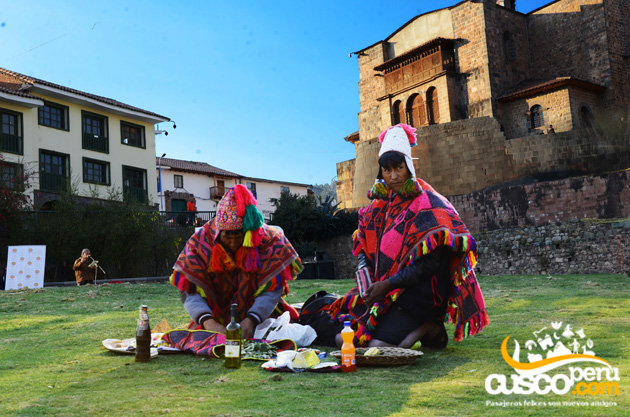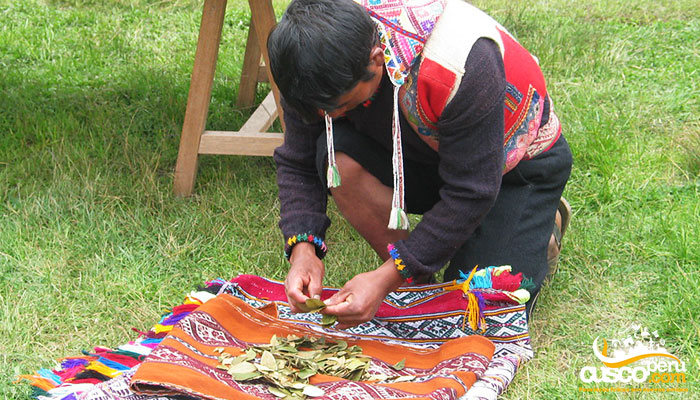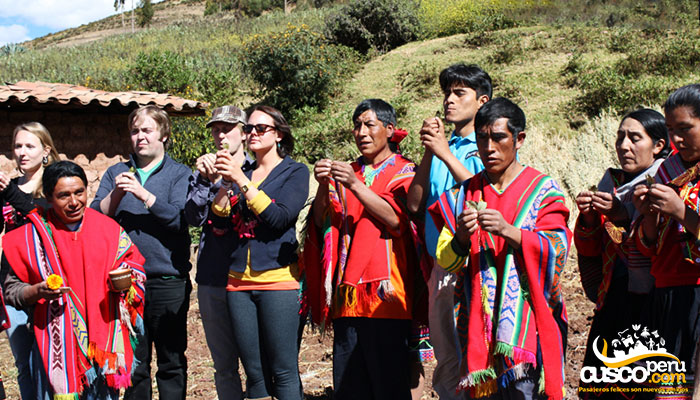The first of August is celebrated as Earth Day or Pachamama Day in the high Andean communities of Ecuador, Peru, Bolivia and Argentina. The Andean region is characterized by its deep cultural and folkloric legacy from the Inca and pre-Inca cultures, which is expressed in their festivities, customs and traditions.
It is a tradition that continues from ancient Inca times. Many people have a close bond with our Mother Earth (Pachamama in Quechua), therefore, every August 1st they perform a Ceremony of Payment to the Pachamama that represents the earth in the broadest sense of the word, that is, all of nature that provides us with the place and the resources we need to live. Pachamama is our Mother Nature and she is everywhere, but we can find special places that the locals consider sacred.

The Incas had the greatest respect for it, it was one of their deities as was the God Inti or Sun. Before any festivity that they performed, they used to give her a previous ceremony of gratitude, it was the time for the earth to eat, drink and smoke. It was the time to give her much of what she has given us.
Table of Contents
It is important to know that most high Andean communities have had and still have a deep dependence and connection with agriculture, being the month of August the month in which normally furrows are made in the earth, preparing it to receive the seeds and therefore the new crops. On the day of the Pachamama, the Andean man tries to give back or return to the earth all that he has received from her, showing his gratitude and asking her that the coming harvests will also be abundant and prosperous.
Currently, many villagers perform this ritual, buy the best products to give thanks and also to prevent situations that may not be beneficial for us. Among the ingredients we need to make the thanksgiving are: coca leaf, fetus of an animal (preferably an Andean animal), some coins, lliqlla (typical blanket with Inca motifs), alcoholic beverages (mostly wine or beer), cigarettes and food.
The festivities for Pachamama Day involve rural men, housewives, workers, farmers, children, authorities, neighborhood councils and other organizations.
To understand the meaning of the Quechua word "Pachamama" we must first break it down into its two parts: on the one hand, we have the term 'Pacha' which means earth, world, universe, time and on the other hand we have the term 'Mama' which means mother. Thus we have by putting the two terms together the meaning of 'Mother earth' or 'Mother world'.
Everything that exists on our planet, especially in the Andean world, has life. From us the people to the stones, the mountains, the rivers, the plants, the trees, etc. Nothing is inert in the Andean world, the stars, the universe, the moon and mainly the sun have life. When there is a ceremony, regardless of the type, everyone attends. The villagers dance, eat, drink and celebrate in communion.

As part of the celebrations for the day of the Pachamama, the men and women of the high Andean communities gather on the first of August in a ceremony that includes, among other things:
The idea is to 'make Pacha Mama eat, drink and smoke'. At the end of the ceremony, wood or firewood is placed in the hole, everything is wrapped with the lliclla and finally everything is consumed by the fire, and then covered with earth. Throughout the ceremony people drink beer, eat various typical dishes and celebrate with dances and music.
The Incas had a 'pantheistic' religion, that is, they believed that the creator God and nature (mountains, valleys, rivers, lightning, thunder, etc.) were actually one entity or concept. The Incas did not know writing, so most of the traditions and myths have been transmitted orally from generation to generation.
The pre-Inca civilizations (Moches, Chimus, Chankas, Tiahuanakus, jungle ethnic groups, etc.) shared with the Incas their belief in a single entity that represented both God and nature. The Incas knew this and this was one of the pillars of their success in spreading this type of belief throughout their empire.
According to the cosmovision of the Incas, space or time was divided into three planes:
Hanan Pacha.- This word means 'the world above'. It was the celestial world, reserved for those people who had been righteous during their lives and which was accessed through a bridge made of hair. In this upper world inhabited the most important gods such as Wiracocha, as we will expand on later.
Kay Pacha.- This word means 'the present world, the here and now'. It is the world where humans, animals and some gods like Pachamama, Mama Sara and Pariacaca live.
Uku Pacha.- This word means 'the world below, the world of the dead'. In this world, according to Andean mythology, inhabit the unborn children, the dead and everything that was below the surface of the earth or the sea. They believed that caves, springs and other openings in the earth's surface were actually the portals or connecting lines between the Uku Pacha and the Kay Pacha. The most important god of this world is called 'Supay' although the goddess Mama Cocha and the god Pachacamac also dwell there.

As we have already mentioned, the Inca religion was pantheistic, that is, they believed in a single entity that represented both creation and nature, however, the only God in the full sense of the word was Wiracocha, the creator God, the Master of the World. According to their importance and role, the Gods lived in the following planes:
Wiracocha - The first records of this god date back to cultures older than the Inca, such as the Huari, the Chavin and Caral, as well as the Tiahuanacu. The Incas took this concept and adapted it into their religion.
It is believed that Wiracocha emerged from the Waters and created heaven and earth. According to traditions, he had a companion, a golden hummingbird that could see both the future and the past. In most of the lithic representations found of Wiracocha, he can be seen holding in both hands two 'Huaracas' (giant Andean slingshots).
The Andean culture has a very rich collection of folklore, tradition, culture and art that are present in its most important cultural manifestations, such as the tribute to Pacha Mama. We invite you to discover this and much more in the company of our professional team of CuscoPeru.Com.

Happy passengers